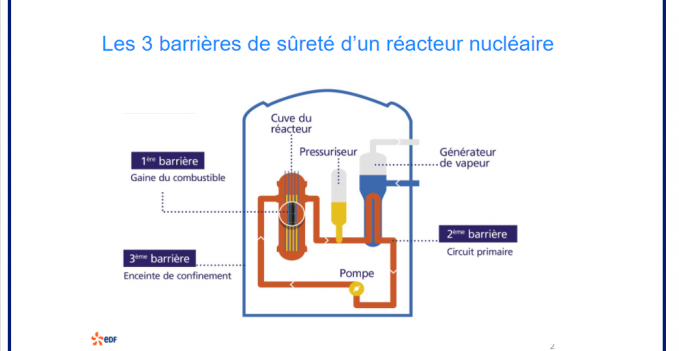“Decoding News From Taishan” – SFEN
The following article was written by Sfen ‘s technical section #4 “Safety and Environment Protection”. It was translated from the French version published on June 16 in Sfen’s RGN Hebdo newsletter.
The Taishan EPR unit 1, 1750 MWe, which started commercial operation in December 2018, has been making the headlines for a few days. The IRSN (French nuclear safety and radioprotection institute) deputy Director General, in charge of nuclear systems and facilities, stated on Monday 14 June, in an interview for the newspaper Les Echos, that the Taishan EPR is not in an accident condition. She explains that such a radioactive gaz presence in the primary circuit, although quite rare, can occur during a nuclear power plant lifetime.

The media have reported leaks of radioactive gases in EPR reactor No. 1 at Taishan. According to published information, the concentration of radioactive gases in the reactor coolant system has apparently increased, while still remaining within the limits set by technical specifications. No increase in radioactivity outside the reactor has been reported.
The cladding of certain fuel rods is believed to have been affected by leaks, releasing the fission gases inside the fuel rods into the water of the reactor coolant system.
Leaks in fuel rods are occasionally observed in water reactors. Activity in the reactor coolant system is regularly monitored, and operating technical specifications define the maximum activity threshold that is acceptable in normal operation. If this threshold is exceeded, the reactor is transitioned to a shutdown state, and the fuel affected by leaks is unloaded from the core. If the activity increases, but without exceeding the threshold, the leaking fuel assemblies are unloaded in the next outage, and the fuel rods concerned are examined. The last time a plant in France was shut down during an operating cycle due to this threshold being exceeded was in the 1990s.
The core of an EPR reactor is made up of 241 fuel assemblies, each with 265 fuel rods, giving a total slightly over 60,000 fuel rods in the core. The fuel rods consist of zirconium cladding tubes containing uranium pellets in which the nuclear reactions occur. The cladding tubes constitute the first of the three barriers placed between the radioactive products and the environment. (The reactor coolant system itself is the second barrier while the reactor containment is the third.)
Uranium nuclei split as a result of fission into two or three lighter elements known as fission products. Some of these fission products are gases, known as fission gases, which gradually migrate from the centre of the fuel pellets to the gap between the pellets and the fuel cladding. If there is a leak in the cladding, a portion of the fission gases spills out through the leak, and dissolves in the water contained in the reactor coolant system. A special system is designed to extract and collect the gases.
In normal operation, fuel cladding leaks may have several different causes, such as wear (due to loose parts, vibration, springs that have become detached from fuel assembly spacer grids, etc.) or corrosion phenomena.
The thresholds for activity in the reactor coolant system defined in operating technical specifications vary according to country and reactor type. The French thresholds incorporate operating experience from several decades of operation of French reactors. The values applicable in China are considered to be in the range of international averages.
In any case, if the level of activity in the reactor coolant system increases, more frequent measurements are required, possible causes should be investigated, and preparations should be made for any necessary investigations.
SFEN will provide additional analysis once further information becomes available, or if the situation changes.
SFEN – Décryptage sur l’EPR Taishan-1 (Original Version)
